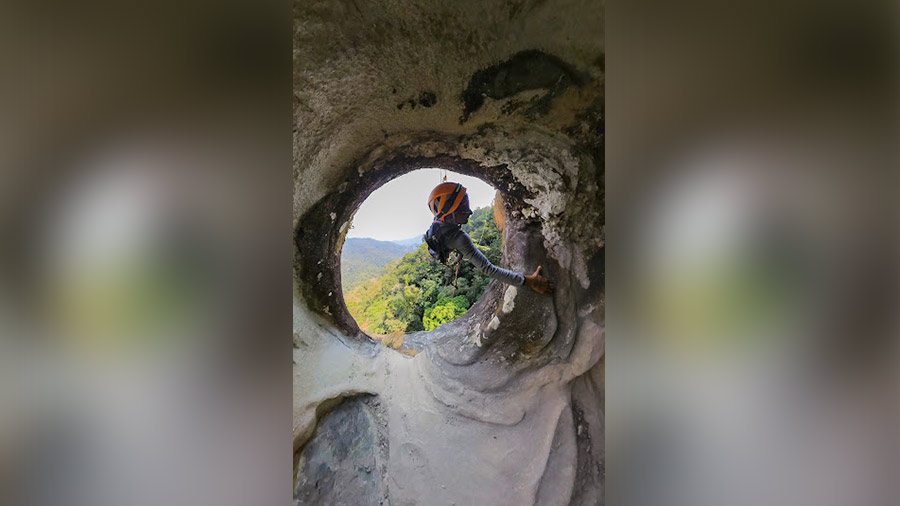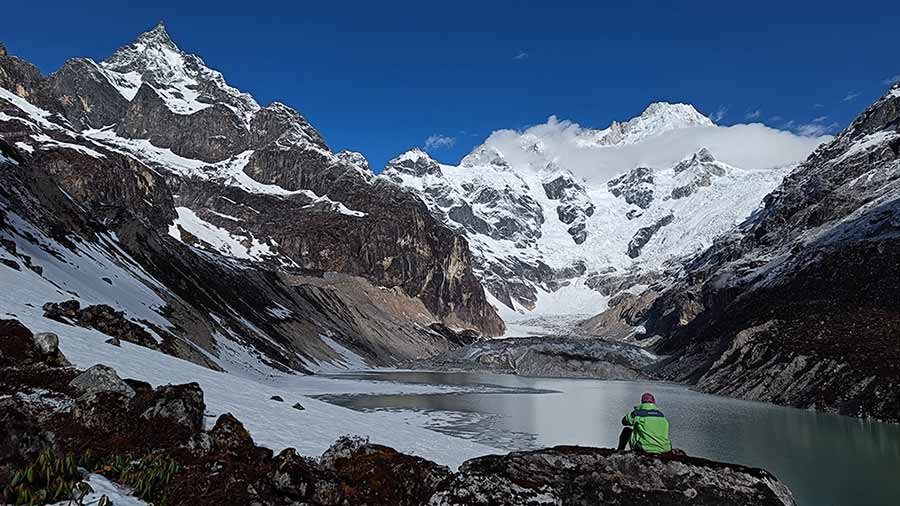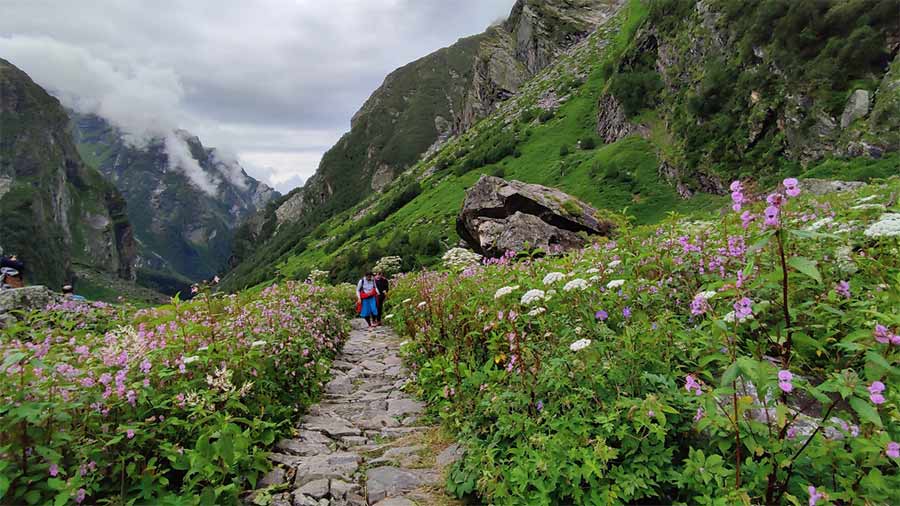In the mid-nineties, during a West Bengal forest department survey of the Mahananda Wildlife Sanctuary, located on the foothills of the Himalayas, travel writer Hirak Nandi came across a local legend of the Lepcha tribe. The Lepchas are indigenous inhabitants of Sikkim, which once included the present-day districts of Darjeeling and Kalimpong. The legend states the Raja-Rani Pahar has secret hideout caves that local Lepcha royals used during invasions and attacks. Since Lepcha history is not well documented in writing, not much is known about their kings and the queens. Most historians believe that Thorve Pano was the first Lepcha king, but there are doubts about his ruling period and it can be anywhere between the 15th and 17th century. The dynasty continued for a few generations and ultimately ended in 1608 with the defeat and the death of the last Lepcha king.
Lepcha locals, who were also part of the survey, told Nandi that the hideout was actually a small opening located high up on the Raja Pahar. Nandi observed that it can only be reached by advanced rock climbing. As the team was not prepared for that, the cave remained a distant dream.
Nandi penned the story in a popular Bengali daily, which was enough to ignite the passion of mountaineer Anindya Mukherjee.
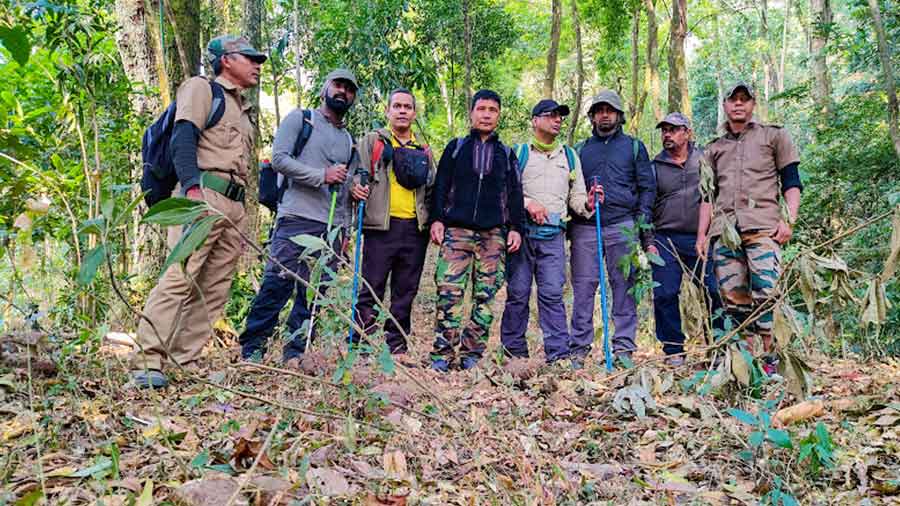
The team along with forest guards. (L-R) Mani Bahadur (forest guard), Sourav Das, Ashis Chandra, Sukh Bahadur (forest guard), Anindya Mukherjee, Rivu Das, Sukanta Deb Mandal and Sachin (forest guard)
At that time, Mukherjee had just left his job as medical representative and had ventured into the world of professional mountaineering. Mukherjee reached the Mahananda Sanctuary with a small team and rock climbing equipment. The local Lepchas warned him from proceeding further and said that the forest has mysterious plants whose smell make people hallucinate and there are even instances of people falling off the cliffs. Ignoring the warnings, Mukherjee and his team proceeded towards the cave but things were not on their side. During the approach, Mukherjee suffered a nasty fall. A cactus that was jutting out from the sheer cliff prevented him from certain death. Even after the near-death experience, Mukherjee continued with his adventure around the globe but the secret royal Lepcha hideout remained elusive for over two decades.
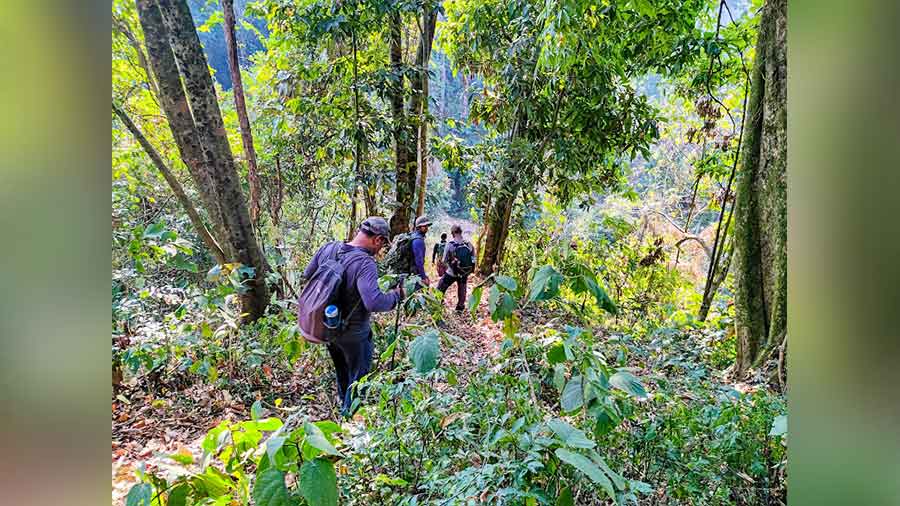
Along the forest trail
In February 2023, Mukherjee was back with a six-member team and yet again the locals discouraged them to go for the cave hunt and they even narrated the story of a man falling off the cliff many years ago — obviously Mukherjee’s appearance has changed in the last two decades. When he revealed that he was the man who had cheated death more than 20 years ago, the locals were more than surprised.
After arranging necessary permissions from the forest department, the team set up a base camp in the Latpanchar Bungalow. The base of the Raja and Rani Pahar was about two hours from the bungalow but the stretch was covered with thick vegetation and had the presence of wildlife. Armed forest guards accompanied the team during their exploration.

The trail continues
On February 13, the team went out on an initial survey and found no caves on the Rani Pahar but they could spot the cave up on the sheer rock face of the Raja Pahar. Located almost 200 feet above ground level, the cave was impossible to climb up to. The presence of thick vegetation also ruled the use of a drone. So, the only option left was to rappel down from the top. Rappelling is a technique of descending near a vertical rock face using ropes and other equipment like harness and descenders. On February 14, the team found a trail on the back side of the mountain leading to the top. After reaching the top, they made several rappels to reach the cave without much success but in the process they were able to find the best rappel point.

Anindya Mukherjee prepares for the rappel
After a rest day, the team was back again at the top of the Raja Pahar on February 16. Mukherjee took the task of rappelling down. After reaching the cave’s mouth, he found himself dangling mid air with the cave almost 10 feet away. Swinging like a pendulum and after several failed attempts he finally made it inside the royal shelter cave. It was nothing royal, but only a hollow on the hill that could accommodate just about three to four people. Mukherjee couldn’t find any traces of human dwelling, but he did bring back dust samples from the cave floor for scientific analysis. Just about four feet away, is another similar cave and Mukherjee managed to sneak inside that also.
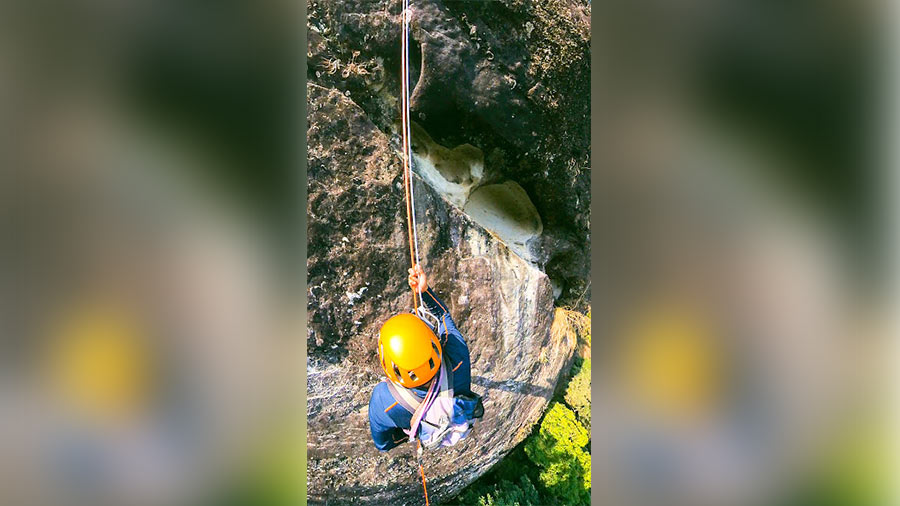
Mukherjee rappels down the steep slope of the Raja Pahar
No wonder these caves were mere emergency shelters for the royals during foreign invasions. Probably rope ladders led the king, queen and their immediate family members inside the cave. Once the invasion was over they were brought back in the similar manner.
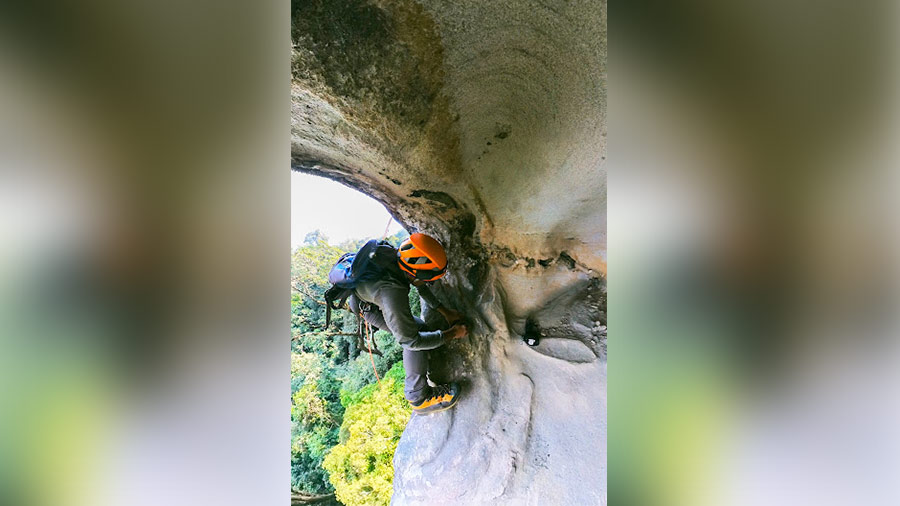
Mukherjee finally makes his way inside the cave which once served as a royal hideout shelter
Although the exploration is over, Mukherjee believes it is only the beginning. He believes that more historic and scientific studies need to be done. Geological methods can estimate the age of the caves, archeologists can look for artifacts left behind in the cave and anthropologists can shed light on the Lepcha lifestyle of that time. Mukherjee is all ready to help these specialised men to reveal the secret hideout of the Lepcha royals.
